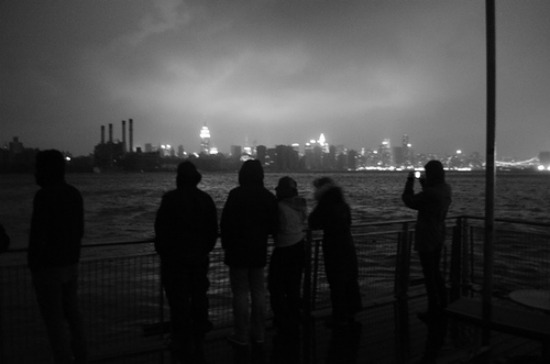Should Cities Prepare For the Worst?
Is the crippling of New York City enough to motivate other cities to protect themselves against extreme weather?
![]()
Talk about being prescient.
Not quite two months ago Mireya Navarro wrote the following in the New York Times:
“With a 520-mile-long coast lined largely by teeming roads and fragile infrastructure, New York City is gingerly facing up to the intertwined threats posed by rising seas and ever-more-severe storm flooding.”
She also noted that critics say “New York is moving too slowly to address the potential for flooding that could paralyze transportation, cripple the low-lying financial district and temporarily drive hundreds of thousands of people from their homes.”
Actually, Navarro was not quite as oracular as it might seem. Scientists at Stony Brook University, working together as the ominously-named Storm Surge Research Group, have been beating this drum for years, warning that New York City becomes more vulnerable with each passing year as ocean levels rise. And last year, a New York State report estimated that a bad coastal storm could flood the subways and cost up to $58 billion in economic damage and revenue lost.
Even the city’s Museum of Modern Art has raised the spectre of a shrinking New York, with a 2010 exhibit titled “Rising Currents.” It included one architect’s vision of a Lower Manhattan defined by “a network of walkways that allow people to walk among the marsh and tall grass.”
Don’t speak of this
The idea of building a series of sea gates along Manhattan that could be closed during a major storm has been much discussed, but so far hasn’t moved much past the talking stage. For starters, there’s the potential cost, estimated at $10 billion, probably more. Also, it hasn’t helped that climate change has become the Lord Voldemort of political issues–you know, the He-Who-Must-Not-Be-Named guy.
Which helps explain why New York is hardly alone among American cities when it comes to being skittish about investing heavily in climate change protection, which, by the way, is now referred to as “resiliency planning.” In fact, according to a recent study at MIT, only 59 percent of U.S. cities are engaged in such planning, as opposed to 86 percent of cities in Australia and New Zealand, 84 percent in Europe and 80 percent in Africa.
Luckily, most American cities aren’t as close to the brink as New York when it comes to the impact of extreme weather. So they’ve been able to get by with adaptation more incremental than transformative.
But at least some cities are starting to make resiliency planning a core part of their 21st century agenda. Chicago, for instance, has for several years now, been repaving its almost 2,000 miles of alleys with permeable concrete, a surface that allows storm water to seep through into the soil below instead of streaming into an overwhelmed sewer system or flowing as polluted runoff into streams and rivers. And that water in the ground beneath the concrete also keeps the aIleys cooler during the blisteringly hot summers Chicago has suffered though in recent years. Soon the city will start using the porous pavement in bike lanes.
Chicago’s also become a leader in the development of green roofs--rooftops covered with grass, flowers and decorative bushes that not only cut a building’s air conditioning costs, but also reduce the amount of rainwater that pours down gutters and into the sewers.
Other cities, such as Philadelphia, Nashville and Houston, have become much more aggressive about planting trees in environmentally sensitive areas to help them counter the impact of storms capable of unloading several inches of rain in a day.
Why quibble?
Will that be enough? Maybe not. But one of the lessons from Sandy is that cities, in particular, no longer have the luxury of waiting for scientific certainty in linking extreme weather to climate change.
As Michael Oppenheimer, a professor of geosciences and international affairs at Princeton, told the Huffington Post:
“Whether or not there was a climate change component to this storm, it teaches us a lot of things, including how behind the 8-ball we are in being able to handle big events of the type that we believe — that scientists think — are going to get more frequent and intense in the future. So whether this one was 5 percent due to climate change or 1 percent or 10 percent — it’s interesting, it matters to a certain extent, but it’s not the whole story by any means.”
Jennifer Morgan, the director of the climate and energy program with the World Resources Institute, put it another way: “While it’s important to understand the scientific evidence underpinning these events, waiting for certainty that a particular storm or other event is caused by climate change is courting disaster. You don’t wait for 100 percent certainty that your house will burn down before you take out fire insurance.”
Slideshow bonus: With New York and Miami at the top of the list, here are the 17 U.S. cities most at risk from rising seas.
Video bonus: Watch time lapse video of Superstorm Sandy pummeling New York and Lower Manhattan going dark.
More from Smithsonian.com
/https://tf-cmsv2-smithsonianmag-media.s3.amazonaws.com/accounts/headshot/randy-rieland-240.png)

/https://tf-cmsv2-smithsonianmag-media.s3.amazonaws.com/accounts/headshot/randy-rieland-240.png)